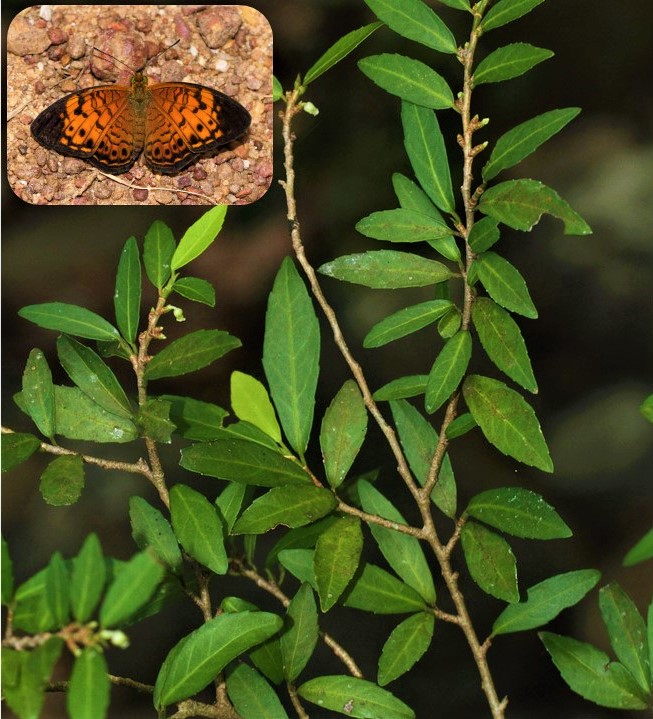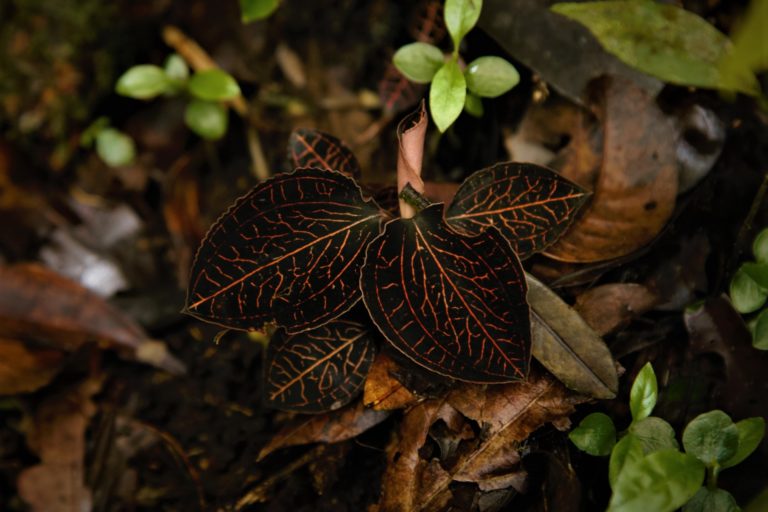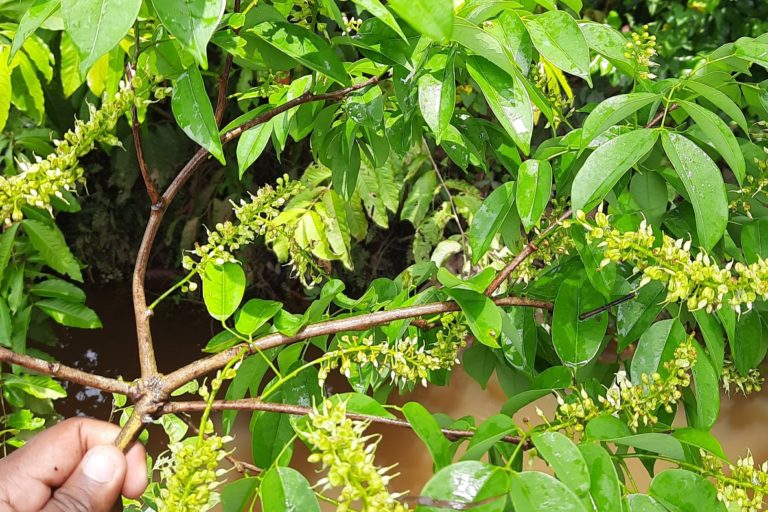- The latest edition of Sri Lanka’s red list of native plants shows that nearly half of the assessed species are threatened with extinction, a higher number than in the previous edition from 2012.
- There was some good news, however, with three of the five plants assessed as extinct in 2012 being rediscovered under serendipitous circumstances.
- The number of critically endangered plants considered possibly extinct because they haven’t been seen in a century has gone down to 128 from 170, thanks in large part to sleuthing by amateur botanists and social media.
- Much of the work compiling the red list was done by a group of young field botanists, who are riding a wave of enthusiasm among citizen scientists keen to study plants.
COLOMBO — Himesh Dilruwan Jayasinghe was on a butterfly chase in Sri Lanka’s Knuckles Mountains, in the Indian Ocean island’s central highlands. He’d tracked down a rare butterfly known as the small leopard, named after the markings on its wings, and was moving in for a closer look at the eggs it had laid in a host plant.
Suddenly he found himself transfixed. Not by the butterfly, or its eggs, but by the plant itself.
Here was a Rinorea decora plant, not seen since 1888, and categorized as extinct on Sri Lanka’s last red list of threatened plants, updated in 2012.
Jayasinghe’s discovery is one of many serendipitous revelations documented in the newly updated red list. (Though called the National Red List 2020, it was published this year.)

The new red list revives three of the five plants declared extinct in the 2012 edition. Along with R. decora, they include R. bengalensis and Crudia zeylanica, all rediscovered by Jayasinghe himself. He found the latter two plants outside protected areas while conducting environmental impact assessments prior to the construction of roads.

Rediscovering extinct plants
Plant conservation isn’t nearly as glamorous a field as conservation of wild animals. But for a change, the C. zeylanica rediscovery grabbed headlines in Sri Lankan media. Jayasinghe had identified a C. zeylanica tree in the Daraluwa area of western Sri Lanka in 2019, sitting along the designated path of a planned expressway. He went on to discover more C. zeylanica trees growing not far from that original one. The 2020 red list now categorizes C. zeylanica as critically endangered.
Jayasinghe found the third “extinct” plant, Rinorea bengalensis, under similar circumstances: while carrying out a survey for the planned construction of another expressway. The plant was growing near a stream in Ratnapura district in southwest Sri Lanka.
“The discovery of Crudia zeylanica and Rinorea bengalensis from populated areas not too far away from congested towns show that most botanical field surveys are restricted to protected areas. We end up missing out on some important plants that are scattered around and survive in disturbed habitats,” Jayasinghe told Mongabay.

The 2012 red list also labeled 170 critically endangered plants as being “possibly extinct” because they hadn’t been seen in nearly a century. The new list whittles this number down to 128, thanks to a slew of new sightings in the past eight years.
“It is encouraging to find so many plant enthusiasts, and their presence helps make important rediscoveries,” said Bathiya Gopallawa, a field botanist at the National Herbarium Department of the National Botanical Gardens.
Gopallawa is a field researcher who uses social media to guides others to identify plants. The availability of reference books and instant communication via social media platforms can ensure timely expert assistance to amateur botanists in identifying plants and encouraging new enthusiasts, Gopallawa said.
“The rediscovery of Shorea ovalifolia, last seen in 1911 and considered ‘extinct in the wild,’ is an example of the importance of filed surveys everywhere,” Gopallawa told Mongabay.
Known as pini beraliya in the Sinhala language, the rediscovery of the plant generated ripples on social media. Plant enthusiast Lasitha Prageeth commented in an online group that a plant bearing such a name occurred in his village. Working together, the experts and amateurs got another “possibly extinct” species restored in status.
A number of additional C. zeylanica plants have also been found thanks to the collaboration made possible by social media, Gopallawa said. Other species, either considered extinct or having only one or two official records, such as Strobilanthes gardneriana, Wrightia puberula, Exacum pedunculatum, Henckelia wijesundarae, were also found thanks to tips offered by plant enthusiasts using social media, Gopallawa said.

Enthusiastic young botanists
“Much of the National Red List work is done by a group of young field botanists, and this augurs well for the country,” said Siril Wijesundara, who headed the expert committee behind the updated red list.
Wijesundara, a former director of the Department of the Botanical Gardens, said it’s also good to see communication tools being used to raise interest in plant studies among the average citizen.
But despite the rediscoveries and fresh sightings, the new red list indicates that threats to Sri Lanka’s plant life have gotten worse overall in the past eight years, Wijesundara told Mongabay.

Of the 3,087 known flowering plants, or angiosperms, native to Sri Lanka, the 2020 red list assessed that 1,496, or nearly half, were threatened. A greater proportion of ferns, 207 out of 350 assessed, were considered threatened.
“This makes 48.4% of flowering plants and 59.1% of ferns threatened,” Wijesundara said. “According to the 2012 assessment, only 44% of flowering plants were threatened. So this is an increase of extinction risk and an alarming situation.”
See related: Biologists warn ‘extinction denial’ is the latest anti-science conspiracy theory

The red list, he added, isn’t just an inventory of plant species and their status, but a powerful tool to inform conservation action and policy change. As such, it should be considered a health report for Sri Lanka’s flora, and, as with the results of a medical checkup, must be prescribed a solution that fits the conservation assessment, Wijesundara added.
While the list focused on flowering plants, ferns, and gymnosperms (seed-producing plants), the publication includes vital checklists for mosses, lichens, algae and cyanobacteria, making it the most updated reference yet on the flora of Sri Lanka.

While the first international red list for plants was published in 1964 by the IUCN, the global conservation authority. Sri Lanka published its first National Red List in 1999, assessing 809 plant species. The 2007 red list evaluated 1,099 plants, while the 2012 edition assessed 3,100 flowering plants.
The National Red List was initially processed by the IUCN’s Sri Lanka country office, which this year handed the task over to the Biodiversity Secretariat of the Department of Environment.
Banner image of the critically endangered Thismia gardneriana, a plant that doesn’t create chlorophylls but instead survives on a symbiotic relationship with a type of fungi emerging from the forest floor. Image courtesy of Bhathiya Gopallawa.
Related listening via Mongabay’s podcast: Biologists warn ‘extinction denial’ is the latest anti-science conspiracy theory, listen here:
